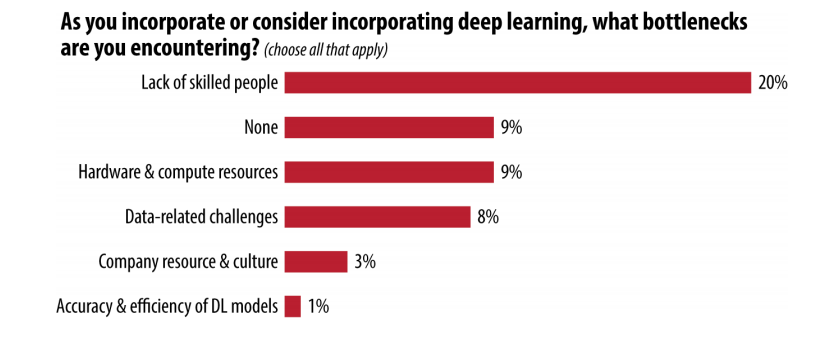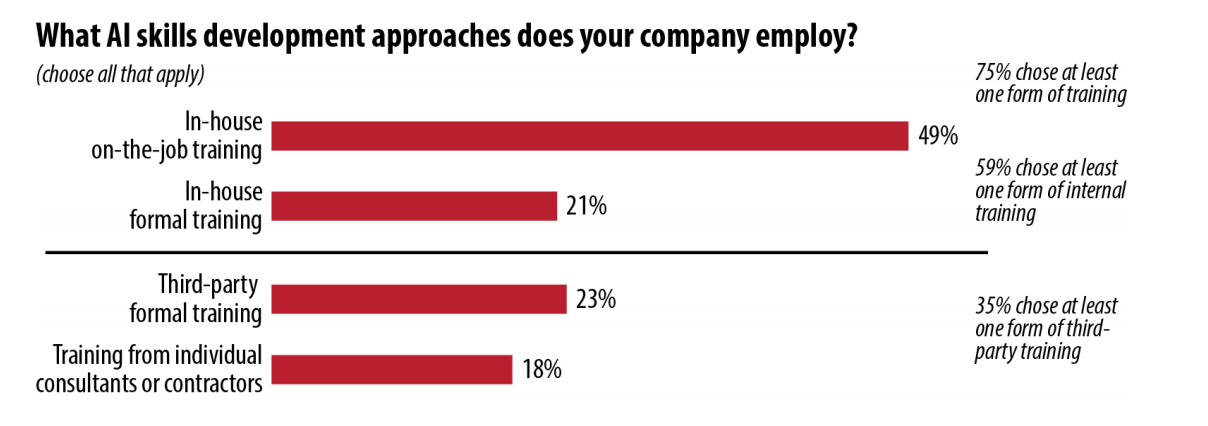New research from tech and biz-focused learning firm O’Reilly—focusing on deep learning, a technique used primarily for supervised machine learning—explores the adoption of tools and techniques to build Artificial Intelligence applications, and the barriers that hinder business adoption.
Findings from the firm’s 2018 AI survey, How Companies Are Putting AI to Work Through Deep Learning, suggest that the democratization of AI and deep learning applications will continue, as development tools and libraries improve.
However, the shortage of AI-trained engineers and developers will persist. For example, while 54 percent of respondents indicated AI will play a big role (35 percent) or essential role (19 percent) in their organization’s future projects, lack of skilled people was the number one bottleneck reported.
Other key findings of the survey include:
- 28 percent of respondents are already using deep learning, but a majority (71 percent) have not yet started.
- Of those already using deep learning, most are using it to make sense of structured or semi-structured data or text.
- 13 percent cited computer vision, used to gain a high-level understanding from digital images or videos, as the application of deep learning they are most interested in.
- 20 percent reported lack of skilled people as a bottleneck, when compared to other barriers, such as hardware and compute resources, data related challenges, company resources and culture, and accuracy and efficiency of DL models.
- A majority (75 percent) responded that their company is using an in-house or external AI training program.
- 73 percent indicated they have begun using deep learning software; TensorFlow, an open-source software library for dataflow programming, was the most popular AI-tool cited.
- 70 percent said cloud services are important to the application they’re building.
- Only 8 percent of respondents believe that deep learning will not play a role in their future projects.
- Other techniques also factor into how respondents build AI systems. For example, 45 percent of respondents are using or evaluating reinforcement learning.
“Despite some claims that AI is over-hyped, these results show that we can expect more companies to use deep learning to improve their own products and services in the coming year,” said Ben Lorica, O’Reilly chief data scientist and AI Conference chair, in a news release. “With that will come a tremendous emphasis on training at every level—from college degree programs to professional trainers—as businesses seek to develop the deep learning skills of their own staff.”
Download the full report here.
Further exploring some of the most important trends and developments in enterprise AI, O’Reilly and Intel will host the upcoming AI Conference, taking place from April 29 – May 2 in New York City. Conference registration is now open.










